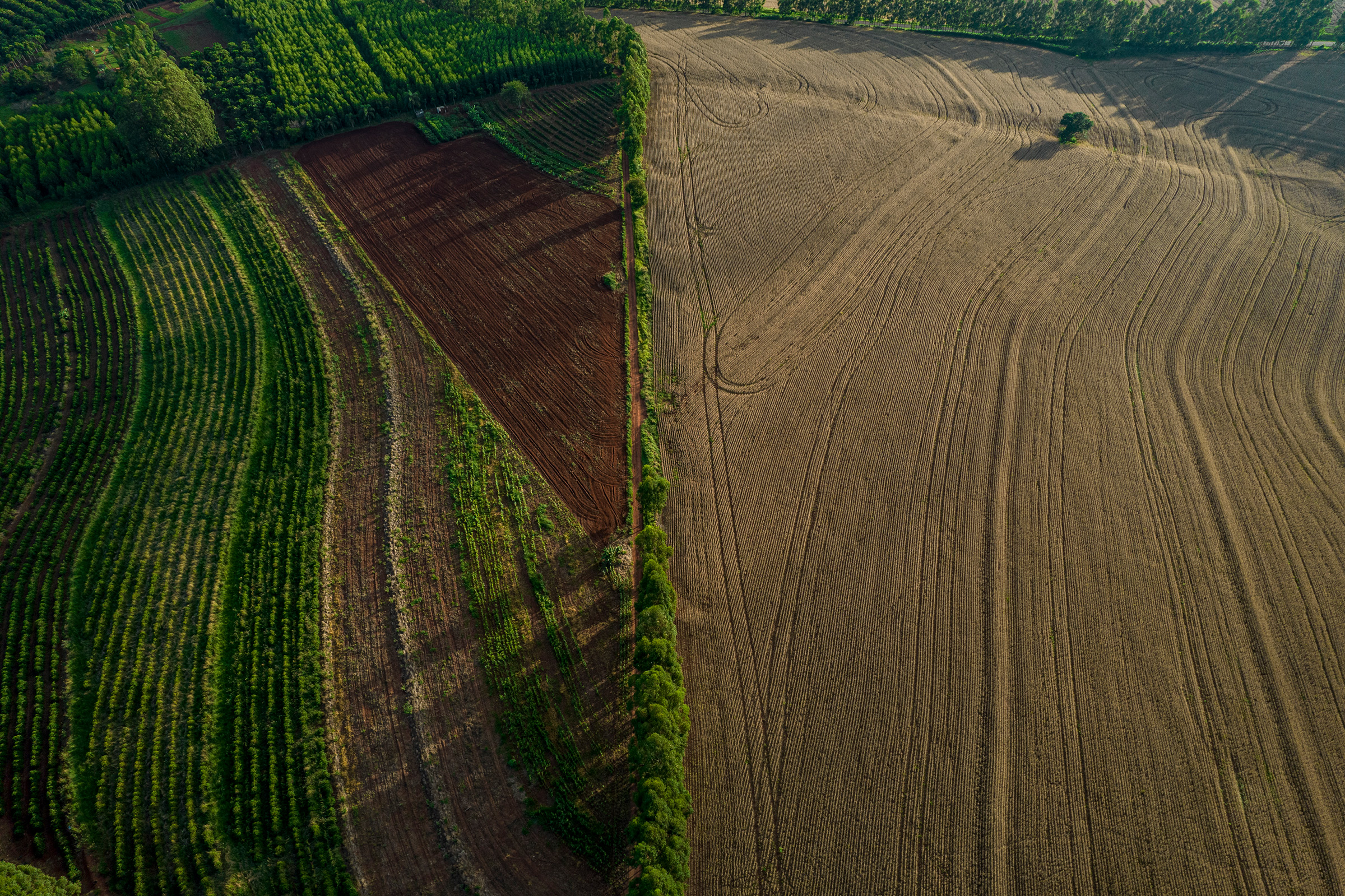In a field of bare red dirt in São Paulo state, Paula Costa is trying to turn back the clock. Five hundred years ago, this land was part of the Mata Atlantica, a dense, diverse rain forest that covered 15% of Brazil. Its trees stretched more than 2,000 miles along the eastern Atlantic coast, and far inland. But today 93% of the forest has been stripped of trees, with much of it turned over to monoculture farming. Costa, a 36-year-old biologist, bangs the ground with her fist: it’s hard, the dry soil degraded by the tropical sun.
Yet on this sweltering morning in March 2022, a few green shoots have forced their way through the surface. The rain forest is making a comeback. “These will be jack beans. These are millet. These are radishes,” she says, fingering them lovingly. “They’re going to bring the soil back to life.”
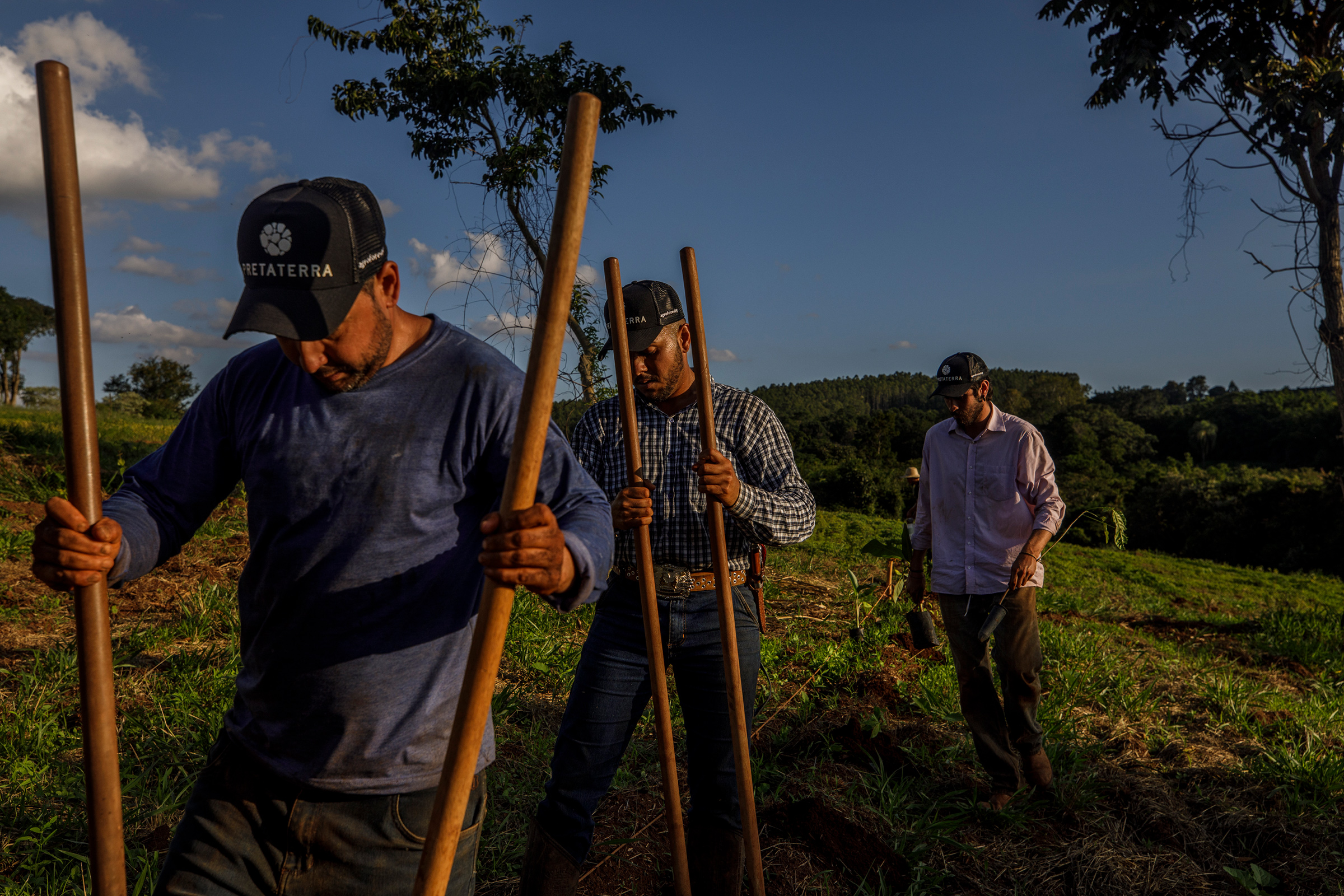
This is not just a reforestation project. It’s also a farm. Soon, those green pioneers will be joined by shrubby coffee plants, big-leaved banana trees, and native trees, like sturdy hardwood jatobas, or towering guanandis. As they grow, some plants will pull underground nutrients to the topsoil with their roots, while others provide shade and draw moisture down from the atmosphere. Most of them will produce crops to sell. “Everything has its function,” Costa says.
She and her partner Valter Ziantoni, a 41-year-old forest engineer, are experts in agroforestry—a method of growing food and other things humans need by mimicking natural ecosystems. In 2021, the couple began planting agroforestry systems on parcels of degraded agricultural land around the town of Timburi. By 2025, they aim to to plant a flag for a new way of farming over 2,500 acres of the former Mata Atlantica.


Agroforestry closely resembles the way Indigenous peoples managed the lands that became Brazil for millennia. That was before the 20th century, when leaders of European descent began calling on citizens to “subdue the forest,” including both the Mata Atlantica and the larger Amazon rainforest, to the north of the country. The aim was to replace diverse landscapes with single crops that had more immediate profit potential, and it has become even more entrenched in recent years under far-right President Jair Bolsonaro. From 2019 to 2022, he stopped enforcing policies meant to protect rain forests and Indigenous communities, resulting in a 60% surge in annual deforestation rates.
The irony is that the tree-clearing strategy has thrown Brazilian agriculture into a self-inflicted crisis. The country’s rain forests are the key to preserving the wet, stable climate that makes things grow. Trees store water in their roots, and release it when the air around them is hot, helping cool the landscape, and creating “flying rivers” that carry moisture across South America.
But from 1985 to 2021, the amount of Brazil covered by native vegetation fell from 76% to 66%, making the region hotter and drier—with grave consequences for farmers. Between June 2021 and June 2022, the worst drought in a century cut Brazil’s national agribusiness earnings by 5.5% compared with the previous year. This is no blip: research published in 2021 found that by 2030, rising global temperatures will shift more than half of Brazil’s agricultural lands out of their optimal growing conditions, hitting the production and profits of a sector that accounts for 29% of the country’s GDP.
Read more: Lula’s Victory in the Brazil Elections Is a Win for the Planet
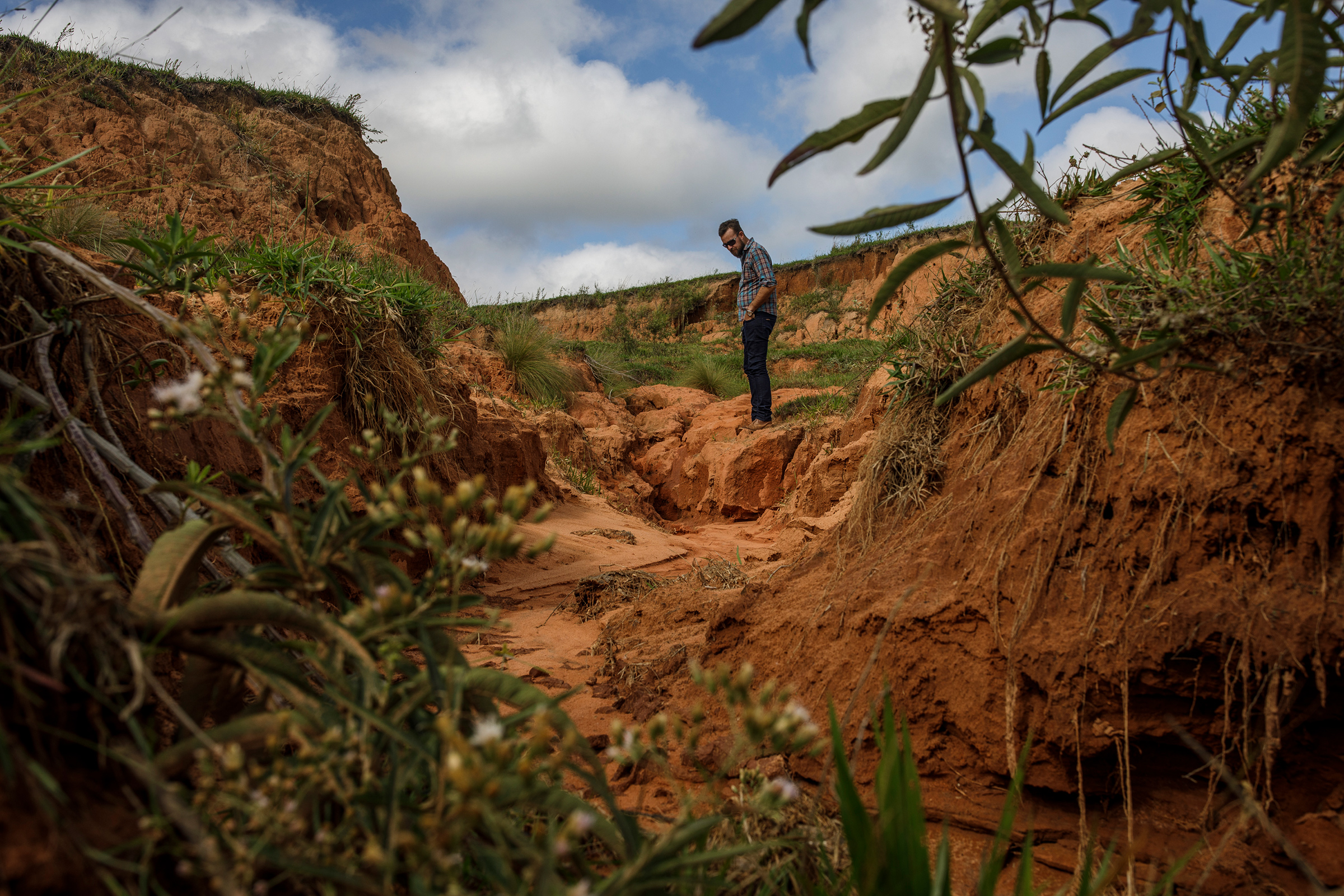
More and more farmers see agroforestry as the solution. Growing trees alongside crops is like installing an air conditioner and sprinkler system, or, in the words of one prominent farmer, “planting water.” In 2016, Costa and Ziantoni founded Preta Terra, a consultancy—then the first of its kind in Brazil—that helps farmers transition to agroforestry. Funding comes from NGOs, corporate philanthropies, and companies keen to clean up their supply chain, like Nestlé and cosmetics brand Natura. Dozens of similar firms have since popped up, along with start-ups to finance farms, and major agricultural producers are launching agroforestry pilots as climate concerns impact their production. Public attention is growing too: in 2022, the smash-hit Brazilian soap opera Pantanal featured a young agroforestry enthusiast who convinces his father to overhaul his unsustainable farm.
Agroforestry is gaining popularity throughout the tropics—from Peru to Cameroon to Indonesia—and hundreds of small-scale projects are popping up across Europe and the U.S. In many places, Indigenous communities are leading the way.
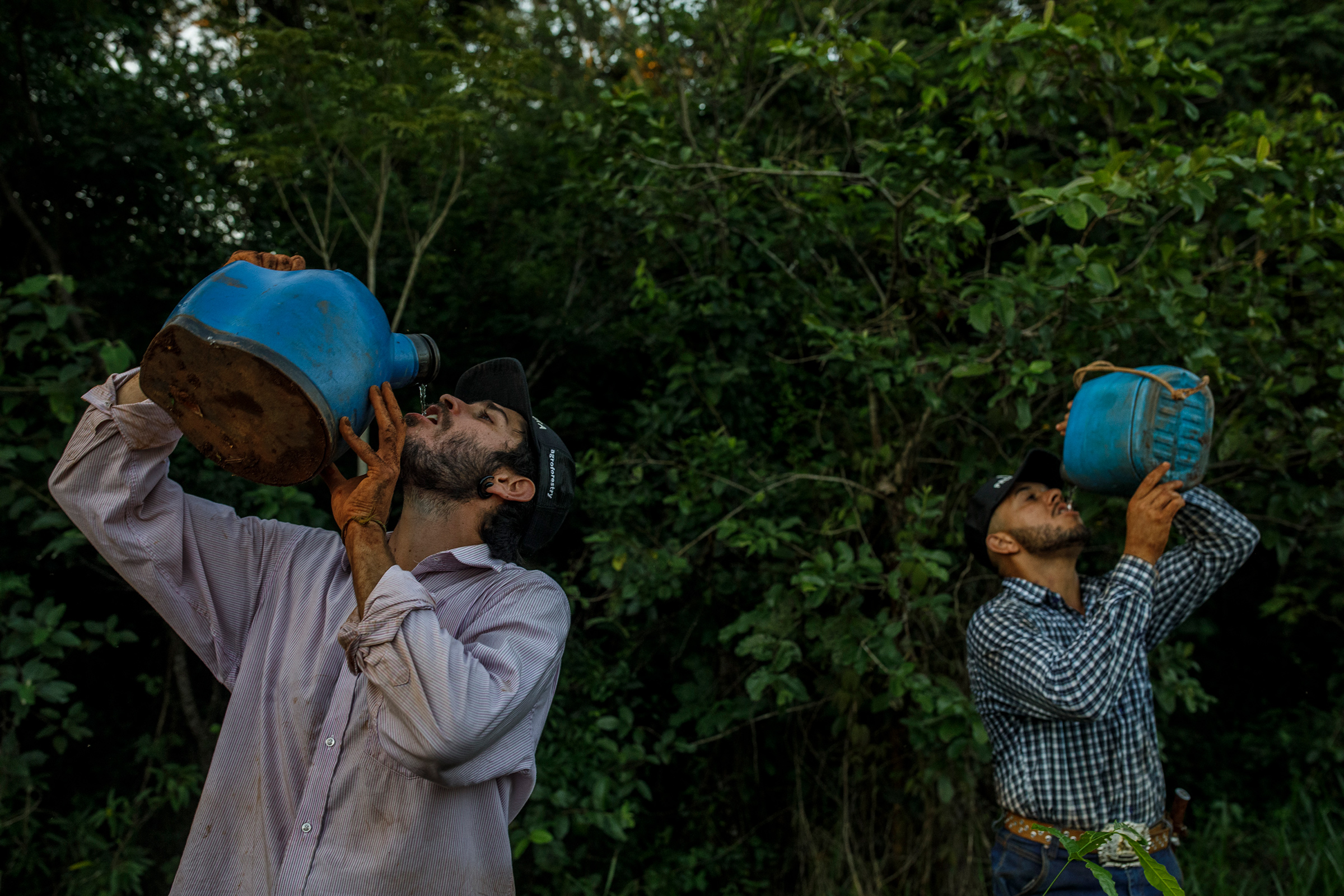
Brazil’s position at the forefront of that global movement may be about to get a boost: on Jan. 1, Luiz Inácio Lula da Silva, a leftist former President, returned to office after defeating Bolsonaro in October elections. Lula’s team has proposed a set of farm loans to encourage a “migration to agriculture that sequesters carbon.” Advocates hope they will benefit agroforestry.
Looking out over the greenery bursting from Timburi’s fields, Ziantoni is feeling bullish. “We want our impact on the landscape to be as big as possible,” he says. “We want to transform all the world’s agriculture into agroforestry.” There are major hurdles to that. Agroforestry is labor-intensive, and requires a complex diversification of local supply chains. But experts say it could offer agriculture a lifeline in a hotter, drier world. “It’s an enormous challenge to change someone’s mindset,” says Costa. “But it becomes a lot easier when the status quo stops working.”


It wasn’t hard for Preta Terra to convince Nestor Porfirio, a coffee farmer near Timburi, to sign up to its project. His family has tended the same 52 acres of hilly land for more than a century, but conditions are tougher today. “It used to rain reliably every year in December and January. But now we don’t know when it’s going to come,” he says. If rain doesn’t come during that period—flowering season for Porfirio’s coffee—his shrubs produce fewer berries. Recent summer temperatures of up to 105°F have also stunted their growth. “If the weather keeps on like this, it’s really worrying,” he says.
But Porfirio has noticed that the few non-coffee trees he already has dotted around his land tend to cool the plants around them. On a larger scale, trees’ impact can be dramatic: a 2021 study found that in tropical regions, when a significant number of trees are cleared, it can make nearby farmland up to 8.1°F hotter, and affect temperatures almost four miles away.
As a test, Porfirio bought a new plot of land where Costa and Ziantoni have helped design a field in which multiple crops can thrive. He’s planting coffee, which grows best in partial shade, alongside lines of native trees that provide timber, guavas, or araçá, an acidic yellow fruit. In between, he’s growing cassava, as well as pigeon peas, ice cream beans, and moringa trees to keep the soil moist, by sucking in water, and fertile, by bringing the soil’s nutrients up from deep underground.
To produce these designs, the couple start with a database of thousands of plant species. The consultancy’s 14 staff members also collect information about the local climate, the regional produce market, and what kinds of plants the client prefers to grow. Preta Terra has worked with more than 150 smallholder farmers around the world, some 30 NGO projects, and three large-scale producers in Brazil. Ziantoni says many clients, particularly the Indigenous communities they’ve worked with in Timburi, Peru, and the Brazilian Amazon, already have a wealth of knowledge about how different plants will affect their land: “What we’re trying to do is systematize that local and ancestral knowledge, and make it work for our modern climate challenges.”
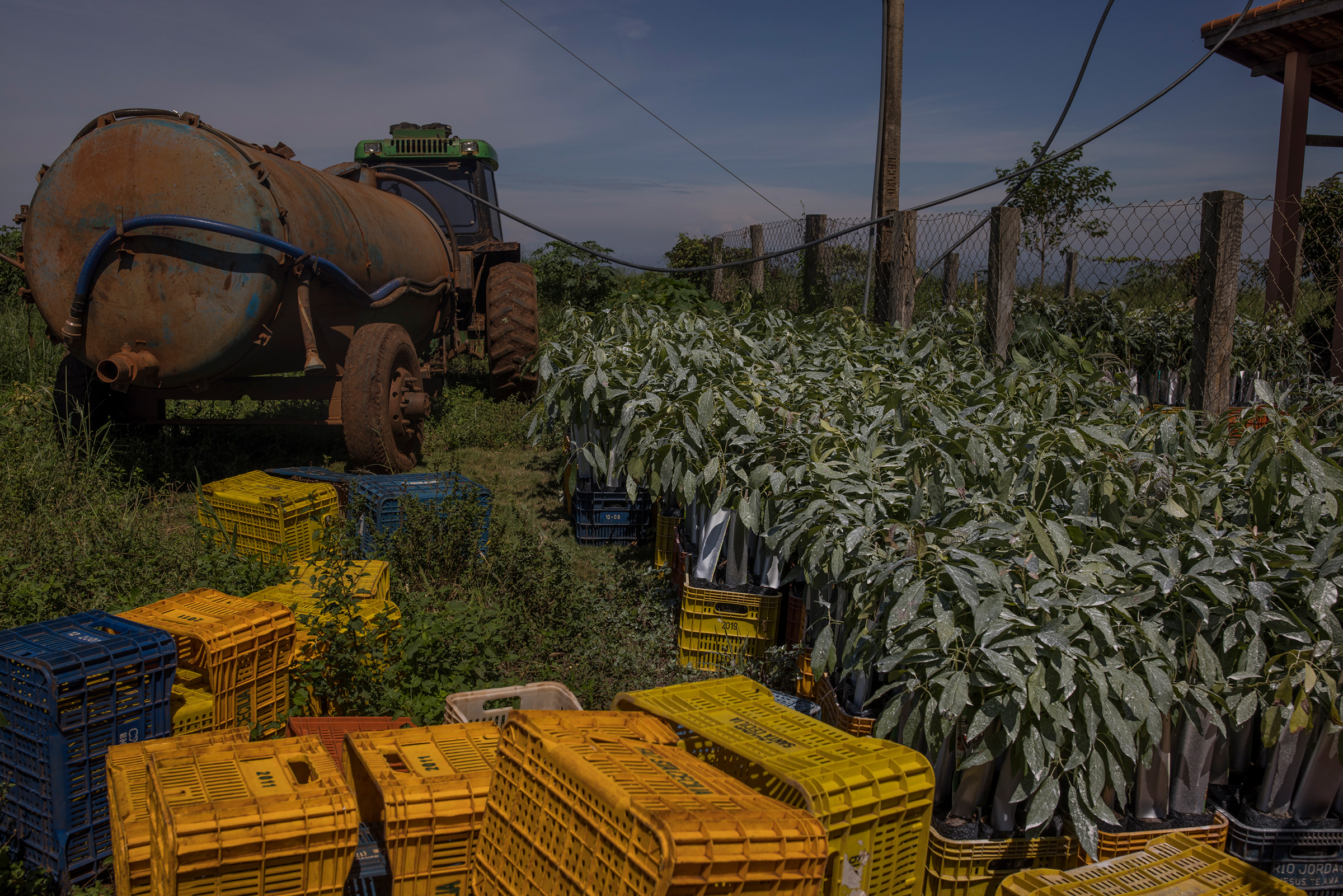
Switching to agroforestry is an investment. A 2020 study by the nonprofit WWF looked at farmers that transitioned from soy monoculture to agroforestry in the Amazon rain forest and found planting the new system costs roughly $1,060 to $1,180 per acre—much more than the few hundrd dollars per acre it would cost to plant another year’s soy beans. The ongoing labor costs are also higher; many plants must be regularly pruned, and it’s harder to use machines when they grow dense. Plus, they need to be harvested multiple times a year. But thanks to increased productivity and the additional crops, they earned back around twice what they invested, and recouped setup costs within two years.
Preta Terra saw similar results at a 2018 project in Pará state in the northern Amazon: a cassava farmer switched from using slash-and-burn methods, in which forest trees are burnt to make way for crops, to -agroforestry. Their projected annual income per acre increased from around $520 to over $2,400, Costa says. And, she points out, “with slash and burn, you can only use that land for a maximum of three years before it stops producing and you have to abandon it.” A well-maintained agroforest can produce in perpetuity.
Read more: Healthy Biodiversity Is The Reason To Fight Climate Change
Part of the economic upside lies in the growing consumer demand for eco-friendly products. The reputation of Brazilian agriculture suffered from the accelerating destruction of the Amazon under Bolsonaro. . In December 2021, six of Europe’s major grocery chains announced they would remove Brazilian beef products from their shelves after an investigation found suppliers were linked to Amazon deforestation. And in September 2022, the E.U. voted to ban imports of all deforestation-linked commodities.
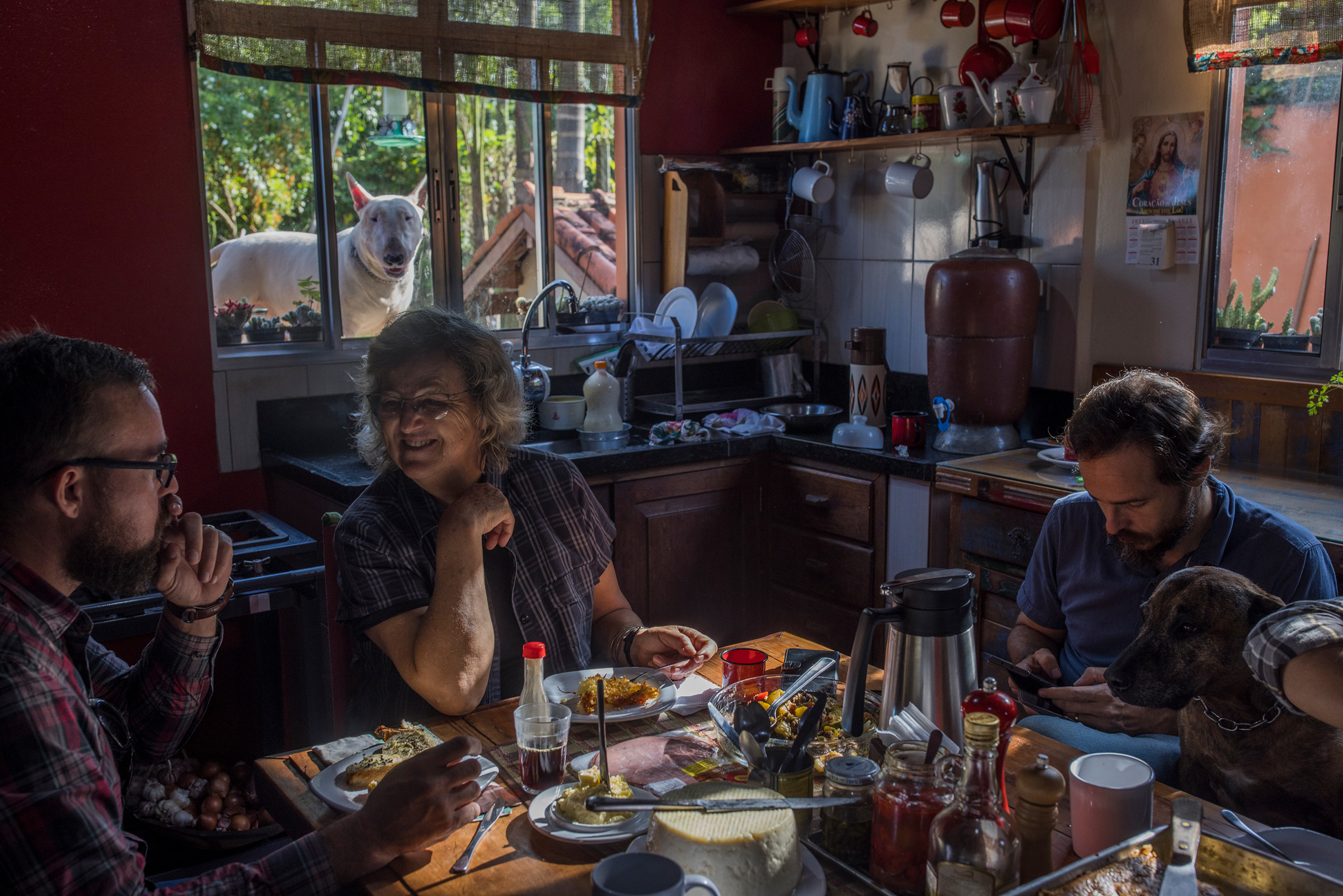
Agroforestry offers a sustainable alternative: as an agroforest grows, its plants draw down carbon and store it in the soil—whereas conventional farmers must till the soil to release its nutrients, allowing stored carbon to enter the atmosphere. Because the plants are pruned to constantly grow, and many of the trees in agroforestry systems are used for timber and regularly replaced, scientists say the systems may even capture more carbon than natural forests. That opens up the possibility of farmers selling carbon credits to businesses who want to offset their emissions.
For Cecilia Whately, a midsize avocado farmer near Timburi, all those factors will play into whether she expands her 62 acre pilot with Preta Terra across her entire 370 acre avocado farm. Declining rainfall has cut production by between 30% and 40%, she says. Reducing the amount of land for avocados will initially cut that even further. But she’ll gain a more robust crop, and new products—likely fruit—to sell, and potentially a higher price tag at European supermarkets for her sustainable exports. “I’m really hopeful that it works, and if it does, others will copy,” she says. “That’s what farmers do: we’re always looking over the hedge at each other’s gardens.”
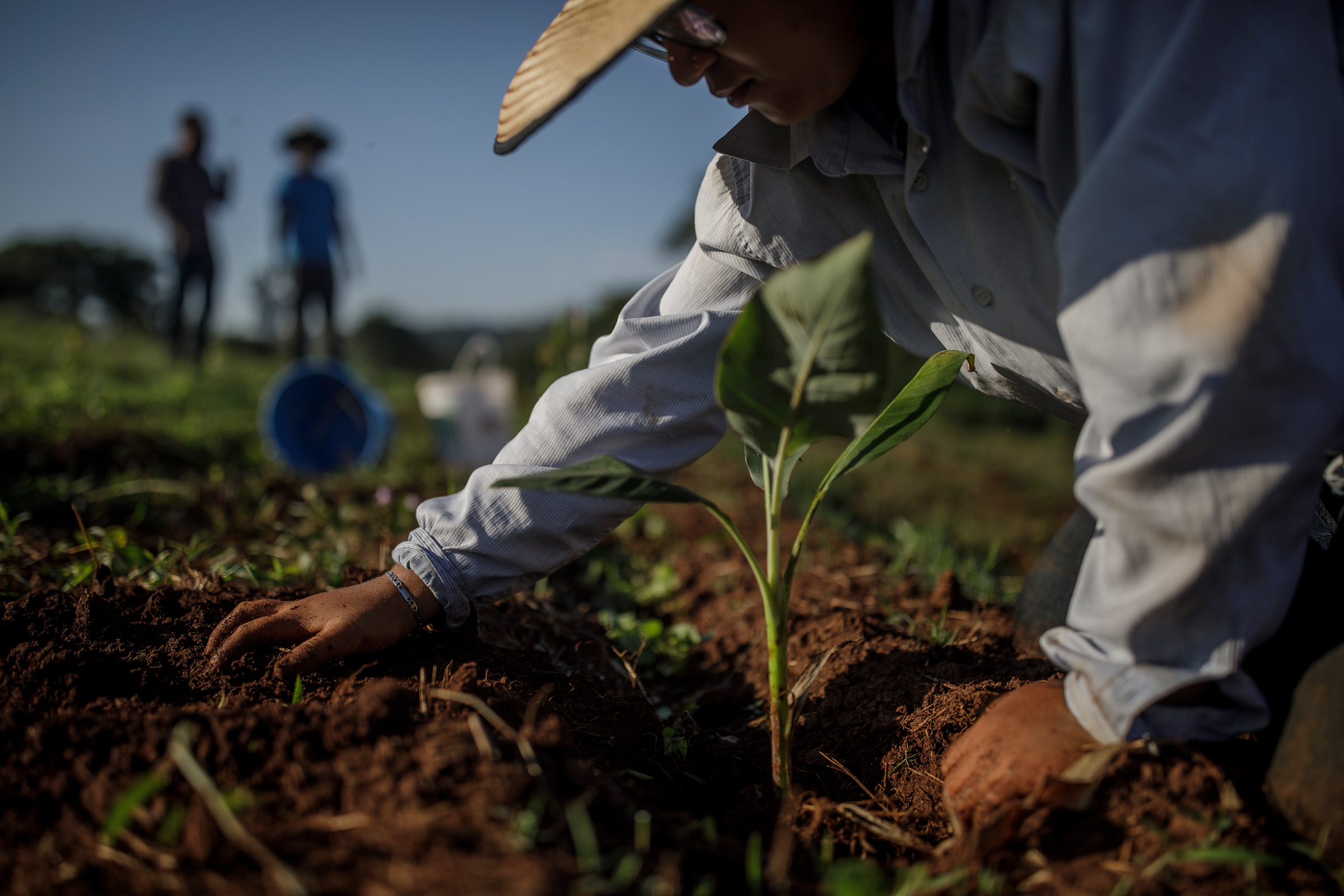
Transitioning to agroforestry isn’t simple. Costa and Ziantoni’s goal of transforming global agriculture into agroforestry may be “a valid dream,” says Ludmila Rattis, a Brazilian deforestation and agriculture specialist at the Woodwell Climate Research Center. “But we’re in the first-step phase. Agroforestry needs to be adapted to the many social and ecological variations that we have in Brazil.” For example, in the remote Amazon, where farms are larger and more sparsely staffed than in the southeast, most farmers would struggle to tend an agroforestry system. In other regions, like the dry northeast, ambitious agroforestry projects have failed because of a lack of training for farmers accustomed to monocultures, Rattis says.
Ziantoni agrees that a lack of education is a major obstacle. Preta Terra offers ongoing site visits and technical support to its clients, he says, and the company has launched an academy with online and in–person courses. The aim is to train farmers and attract unemployed people living in urban areas to join the farming workforce.
The biggest challenge, though, is supply chains. Regional agricultural industries tend to focus on just a few products. In Brazil, coffee dominates in the southeast, wheat in the southwest, and soybeans and corn in the central and Amazon states. If a farmer starts growing guavas, there may not be a buyer able to process or sell them for hundreds of miles around. Timburi is unusually lucky: on top of its coffee and avocado markets, it is near ports that take products to Europe, and just a four-hour drive from São Paulo, a city of 22 million. Still, a processing hub for the project’s new fruits is needed; Preta Terra is working with local officials and business leaders to set one up. Replacing a large portion of mainstream agriculture with agroforestry would take “a comprehensive reorganization on a national level,” Costa says.
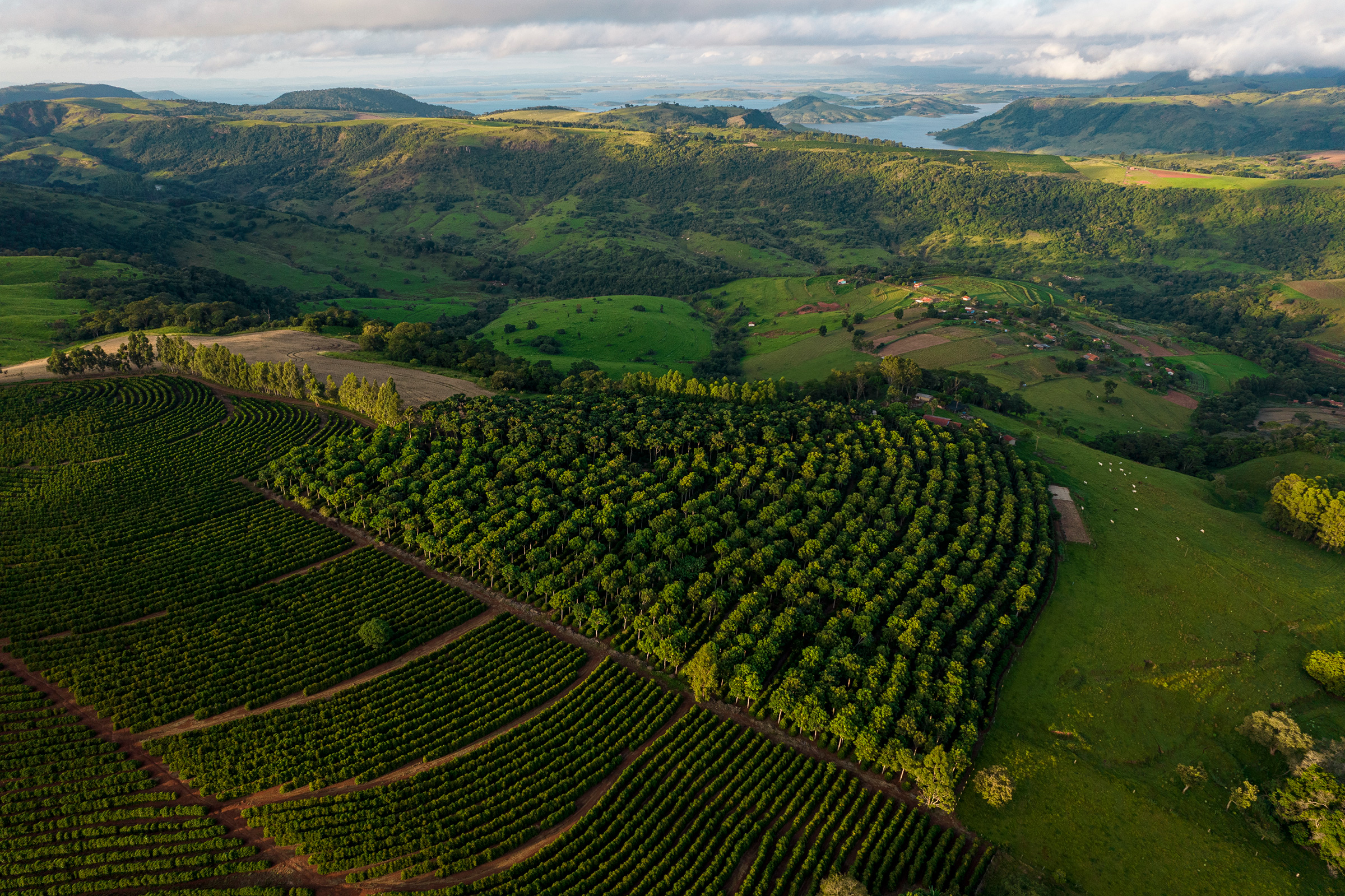
The influential forces needed to drive that kind of reorganization may now be getting on board. Big money is being funneled into agroforestry. Cargill—a U.S.-based agribusiness giant that’s been repeatedly linked to deforestation in Brazil—is funding the Timburi project along with Swiss investment bank UBS. And in 2022, Preta Terra started work on a nearly 3,000-acre project in Mato Grosso, a large state on the Amazon’s southwestern edge, paid for by two investment funds hoping to prove agroforestry’s economic viability at scale.
Preta Terra hopes Timburi will show what’s possible. “We’ve got everything in reach—the producers, the market and the consumers—we just need to connect it all,” Costa says. “If we can do that across this region, we’ll have a success case that can be replicated elsewhere.”
That may be complicated, but Whately, the avocado farmer, says there’s not much choice. Minas Gerais, the massive state bordering São Paulo, used to be a lush, forested area. “Now parts of it look like savannah. If we don’t do anything in the next 10 to 20 years to change, it will be the same here too: everything’s going to be a savannah.”
More Must-Reads from TIME
- Cybersecurity Experts Are Sounding the Alarm on DOGE
- Meet the 2025 Women of the Year
- The Harsh Truth About Disability Inclusion
- Why Do More Young Adults Have Cancer?
- Colman Domingo Leads With Radical Love
- How to Get Better at Doing Things Alone
- Michelle Zauner Stares Down the Darkness
Write to Ciara Nugent/Timburi, Brazil at ciara.nugent@time.com
